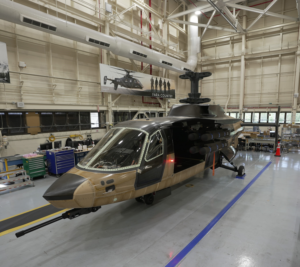
WEST PALM BEACH, Fla. — Sikorsky’s [LMT] build of its Raider X helicopter for the Army’s Future Attack Reconnaissance Aircraft (FARA) competitive prototyping (CP) effort is now 90 percent complete, with a second fuselage set to start airframe structural testing this month. During a media visit to Sikorsky’s facility here, company officials also cited the extensive testing with its S-97 Raider technology demonstrator helicopter as feeding critical data collection that is helping ensure Raider X will offer a “lower risk” option…

 By
By 











